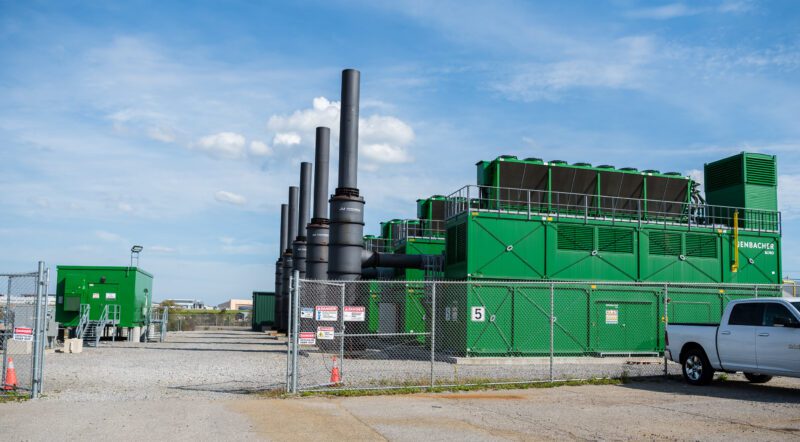Powering the Airport: PIT’s Microgrid an Innovative Force of Resiliency
Pittsburgh's microgrid first to completely power a major airport
By Julie Bercik
Published December 18, 2023
Read Time: 2 mins
Resiliency. Redundancy. Sustainability. Pittsburgh International Airport’s innovative and first-of-its-kind microgrid embodies these principles and is drawing the attention of the aviation industry.
“We are able to power 100 percent of our campus from this energy plant and our solar facility,” said Tom Woodrow, SVP Engineering and Intelligent Infrastructure, PIT.
That means the traditional grid now is backup power. Instead, the microgrid allows PIT to be self-sufficient for power generation and resistant to outages on the traditional grid.
The microgrid went live in 2021 and is helping PIT meet its sustainability goals, lower energy costs and reduce its carbon footprint.
“In 2022, we reduced carbon emissions regionally by approximately 6 million pounds,” said Woodrow. “With regards to energy, the cost savings, we’re saving a least $1.5 million a year in utility costs.”
The five natural gas-fired generators and close to 10,000 solar panels power PIT’s 8,800-acre campus, including the airfield, landside and airside terminals, the Hyatt hotel and the 7-11 gas station. When PIT’s new terminal opens in 2025, it also will be powered by the microgrid. There are also plans to double the number of solar panels.
“Solar in the northeast, people that live in sunny, warm places kind of roll their eyes, like you can’t get solar, but obviously we can and the economics work,” said Mike Brady, CEO of IMG Energy Solutions. “Coming out here today, it’s a typical Pittsburgh cloudy day, but we are going to get about 10 percent (of maximum capacity). It’s December too, so you’ve got shorter days, but today we will probably get about 10 percent of a max summer day.”
A public-private partnership funded the microgrid, so there was zero cost to the airport. IMG partnered with Peoples Gas and the Allegheny County Airport Authority as owner and operator of the solar array and operator of the natural gas generators.
“It’s really lead to a reconsideration by the industry of what’s possible,” said Christina Cassotis, CEO of Pittsburgh International Airport.
PIT’s microgrid has received top industry awards for innovation and sustainability. In November, the Centre for Aviation (CAPA) named PIT the Environmental Sustainability Airport of the Year.
Other airports are also taking note of PIT’s microgrid. A team from Houston’s George Bush Intercontinental Airport visited PIT for a tour and is in the early stages of planning a power generation and resiliency strategy. Officials at John F. Kennedy International Airport announced in January 2023 that their future New Terminal One will be powered by more than 13,000 solar panels as well as natural gas fuel cells as part of its 11.3-megawatt microgrid.
“We are really proud of the microgrid, and we see this just as one example of the work we are doing in sustainability,” said Cassotis.

In addition to nearly 10,000 solar panels, five natural gas-fired generators help power PIT’s 8,800-acre airport campus. (Photo by Beth Hollerich)
Watch
This Next
Read
This Next






